Acoustic Energy AE509

 Few things are ever new in loudspeaker design, but progress sees the same ideas coming back in ever more diverse forms. In the case of the new AE509, we see the reappearance of carbon fibre driver cones and domes. Various companies from Audax to Sony have designed and manufactured these over the years, and with good reason because it is a far lighter material than many others – so can surely only be a good thing.
Few things are ever new in loudspeaker design, but progress sees the same ideas coming back in ever more diverse forms. In the case of the new AE509, we see the reappearance of carbon fibre driver cones and domes. Various companies from Audax to Sony have designed and manufactured these over the years, and with good reason because it is a far lighter material than many others – so can surely only be a good thing.
The AE509 has twin custom-designed carbon fibre mid/bass units working together with a bespoke carbon fibre tweeter. This confers several immediate and important benefits. Because the material is – according to AE designer Mat Spandl – half the weight of the company’s former aluminium cones, it offers better transient speed and is less power-hungry. Also, because all the drivers use the same carbon fibre weave, they integrate better in the time domain. Finally, because they share the same material, there’s tonal consistency to all frequencies. This cohesion is aided and abetted by the natural self-damping that the material has, claims the designer.
I’ve seen various carbon fibre drivers over the years, but it’s rare to see a dome tweeter made from this material. The lighter and better damped the dome is, the smoother, less coloured and faster the sound. This 25mm unit replaces the heavier aluminium dome used on this speaker’s predecessor. It partners two 125mm drivers with cast aluminium baskets, metal dust caps and a new 35mm voice coil. The speaker is a two-way configuration, but with a midrange-tweeter-mid/bass (MTM) driver layout, with high voltage polypropylene film-wound capacitors and air core inductors used in critical locations in the crossover. The business is done at 560Hz and 3.1kHz, meaning the tweeter handles unusually low frequencies for a design such as this.
The cabinet is 18mm MDF with the company’s Resonance Suppression Composite (RSC) damping. Interestingly, the switch to carbon fibre drivers means the cabinet doesn’t need quite as much damping to be factored in, which makes for an even faster sound due to less energy storage. Four aluminium spiked feet fit into the base, providing greater stability. The cabinet comes in a choice of white or black piano gloss finishes, and American walnut wood veneer as shown.
The company claims a frequency range of 32Hz to 28kHz (+/-6dB), which is wider than you might expect for this size of speaker. Nominal impedance is 6ohm and AE claims 175W peak power handling. It’s a bass-reflex design, but due to the clever working of the company’s slot port – mounted almost at the top of the rear baffle – it doesn’t put out too much rearward energy so you can run the speaker surprisingly close to a boundary wall. I also apply a little toe-in, and find it quite flexible.
Sound quality
Compared with its price rivals, the AE509 actually sounds a little dull. But that’s not dull as in masked, veiled and opaque – but rather it isn’t as bright or shrill. There’s an almost tonal absence of sheen or ‘clang’ to the sound. Instead, you get to listen into the actual instruments in the recording, rather than being assaulted by them. It’s an eerie sensation that’s quite a thing to behold, and very conspicuous. Manix’s Head In The Clouds is a banging piece of breakbeat techno that can be seriously forward via some speakers. Yet those super-fast hi-hat cymbal runs and rim shots come over as rather silky. There is certainly no crash-bang-wallop. The keyboard sound proves rich and sonorous, but doesn’t dazzle and the female vocal samples are smooth and defined yet never shrill.
The fascinating thing is that it all sounds so dizzyingly fast. The drum breaks – running at nearly 150bpm – are frenetic, yet there’s no grain or sibilance to be heard here. Move to some high-paced pop with Blondie’s Hanging On The Telephone, and I’m similarly taken aback by the speed of the music; it comes out at you at dizzying velocity. There’s a vim and brio that makes listening quite an event and I feel compelled to sit up and pay attention. It’s this curious conjunction of tonal grace and transient pace that sets the AE509 apart from the fray.
Put on 4hero’s Give In, with its deep, sumptuous bass and the speaker shows its impressive handling of low frequencies. First, it goes lower than I expect for a floorstander of this size. One reads all sorts of claims from manufacturers, so I often take quoted frequency response figures with a pinch of salt, but the AE509 really does appear to track right down into the bottom octaves. Yet its bass is never overblown or bulbous; indeed, it is taut and tight, but slightly understated. In addition to this, there’s no sense of the designer having engineered in an artificial peak in the upper bass to make it sound bassy and powerful, as was sometimes the case with floorstander designs in the nineties. Like the mythical Christmas snow, the bottom end is deep and crisp and even. A further thumbs up goes to the cabinet and bass port, neither of which are particularly audible; there’s never any sense of it honking away behind the drive units in an unruly way.
Stereo imaging is very good. I have heard point-source speakers with coaxial treble/mid drivers do better, yet the AE509 still does a perfectly good job of recreating the recorded acoustic of Simple Minds’ New Gold Dream. This song is a bit of a dirge through the wrong replay equipment, but the Acoustic Energy floorstander navigates it well, giving a surprisingly clear, detailed and open sound with fine location of different instruments and vocals in the mix. I am seriously impressed by the way Jim Kerr’s ethereal-sounding voice hovers somewhere above and in front of the rest of the effortlessly conveyed venue acoustic, showcasing the floorstander’s really rather captivating depth perspective.
This floorstander sounds great with pretty much every track and music type I play. The only criticisms one can make are down to the size of the mid/bass drivers; there’s a slight sense of compression when you’re punching large amounts of watts into it, but you’d really struggle to think this was an issue in most British living rooms. The narrow baffle design – as is the rule these days, it seems – means there isn’t quite the effortless ease of loudspeakers with larger diameter drivers. Being a two-way configuration doesn’t help here, either – but few loudspeakers are at this price. All the same, I love the AE509’s clean, detailed, fast, adrenaline-fuelled sound, combined with a high degree of refinement and superb sense of sophistication.
Conclusion
Acoustic Energy is on a roll right now and in recent years has successfully simplified its range of models with strong 100, 300 and 500 series loudspeaker lines offering a choice of different standmount and floorstanding options to attract buyers at a variety of price points. The AE509 is a seriously worthy flagship and as such should be placed high on any audition wish list. DV
DETAILS
Product: Acoustic Energy AE509
Price: £2,300
Origin: UK
Type: Two-way floor standing loudspeaker
Weight: 22kg
Dimensions: (WxHxD) 185 x 1,000 x 270mm
FEATURES
● 1x 25mm carbon fibre dome tweeter(8ohm)
● 2x 125mm carbon fibre mid/bass drivers
● Quoted sensitivity: 89dB/1W/1m (6ohm)
 |
Inside this month's issue: Arcam Radia A25 integrated amp, iFi Audio iDSD Diablo 2 DAC/headphone amp, Eversolo DMP-A8 streamer/DAC/preamp, Line Magnetic LM-845IA valve amp, Record Store Day Spring Drop, standmount loudspeaker Group Test and much, much more
|



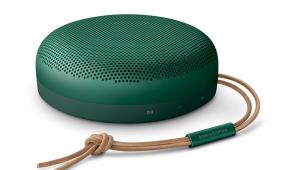
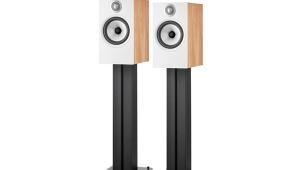

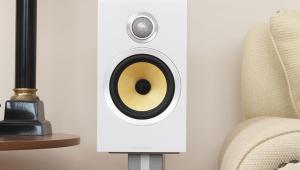
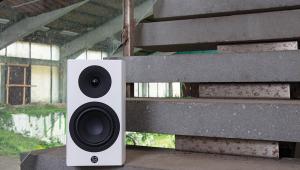
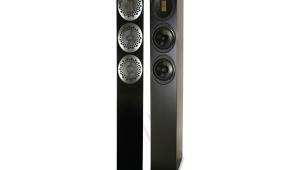




































.jpg)



